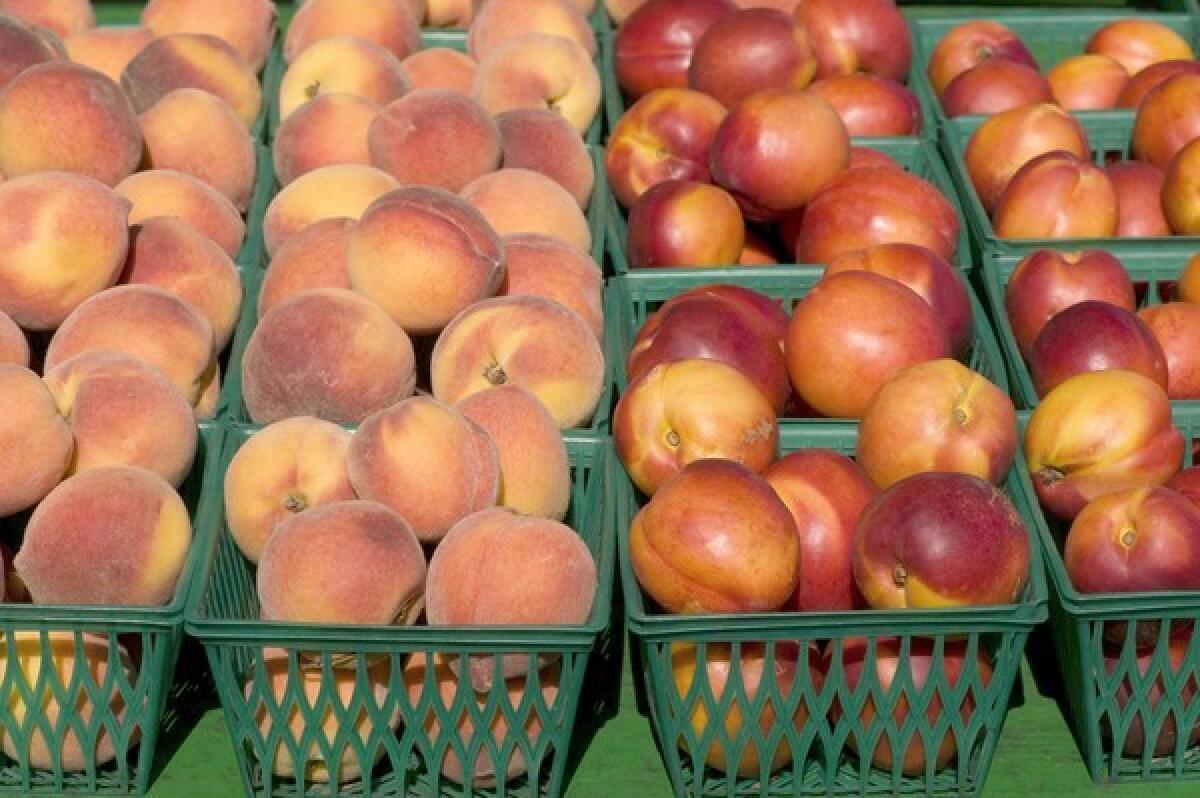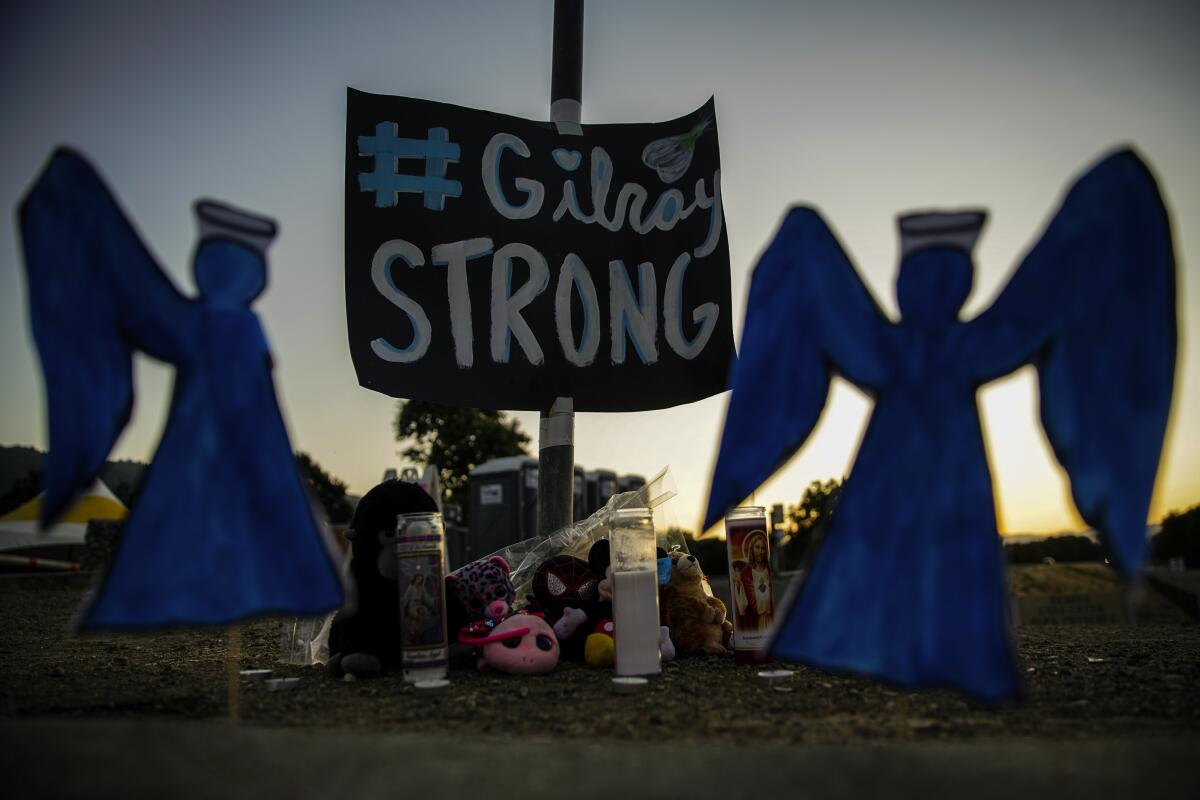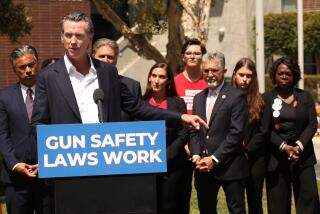Newsletter: Proposed food stamp cuts could be intensely felt in the Central Valley

- Share via
Good morning, and welcome to the Essential California newsletter. It’s Thursday, Aug. 1, and I’m writing from Los Angeles.
Get the Essential California newsletter »
Hunger in the Great Central Valley has long been one of the state’s cruelest ironies.
This is the world’s breadbasket. No other location on the planet has so much bountifully fertile Class 1 soil in one place or puts more food on the rest of the state’s plates.
Tulare County, which spans from the lower San Joaquin Valley to the Sierra Nevada, is a national leader in agricultural production.
But Tulare (pronounced too-lair-ee) also has the highest rate of food-stamp participation in the state, with more than 25% of residents relying on the Supplemental Nutrition Assistance Program, or CalFresh, as its known in California. That’s a participation rate more than twice the national average. Only three other California counties have rates above 20%, and all but one of them are in the Central Valley.
“The heart of the agricultural region that feeds the world unfortunately has some of the highest rates of food hardship,” said Andrew Cheyne, director of government affairs for the California Assn. of Food Banks, noting that that the Central Valley cities of Bakersfield and Fresno rank as two of the “hungriest” cities in the country.
Last week, the federal government announced proposed changes to SNAP eligibility that would close a so-called loophole that has long allowed states to streamline the benefits application process and take higher housing and childcare costs into account.
[See also: “Trump Administration proposed cuts to SNAP could lead to hunger for area residents” in the Modesto Bee]
Here’s how my colleague Michael Hiltzik explained it in a recent column: “The ‘loophole’ he’s referring to is known as ‘broad-based categorical eligibility,’ which allows states to accept residents into SNAP if they’ve already been deemed eligible for assistance through the government’s Temporary Assistance for Needy Families program, which is what most people probably would regard as traditional welfare, or are receiving cash payments under Supplemental Security Income, a program for low-income, aged, or the infirm.”
“Broad-based eligibility allows states to enroll residents in SNAP without performing a duplicative income test or checking their assets,” Hiltzik wrote. “But it’s not designed to entirely eliminate income limits. Traditionally, SNAP covers households with income up to 130% of the federal poverty limit (or about $33,500 for a family of four); in some states, broad-based eligibility accommodates households with income up to 200% (or $51,500 for a family of four).”
A similar proposal was previously rejected by Congress in the 2018 Farm Bill. This version could go into effect after a 60-day public comment period that began on July 24.
Ending broad-based eligibility would, by the administration’s own account, probably mean that more than 3 million people would lose access to SNAP nationally. Here in California, estimates place the number of households who might lose access to SNAP at 120,000 or more. Cheyne’s colleague at the California Assn. of Food Banks, senior policy analyst Rachel Tucker, described the “the outsized impacts that this proposed rule would have in California, and particularly in the Central Valley,” if it goes into effect.
[See also: “Congressman: Trump proposed food stamp changes could bring ‘insecurity’ to Central Valley” in the Visalia Times-Delta]
Nicole Celaya runs Foodlink, the only independent food bank in Tulare County. The organization serves all 4,839 square miles of the county, and between 300,000 to 400,000 people annually. “Most of the people that we serve are the people that are picking the fruit and working in the fields and working in the packing houses,” Celaya said. “And they can’t afford to even buy the food that they are picking and that they are packing.”
She, like other food bank operators, also expressed deep concern about what would happen if the proposed rules go through. “We’re already at capacity the way it is,” Celaya said. “If SNAP benefits get affected, and more people in our community lose those benefits, then it’s going to put a great strain on our resources.”
And now, here’s what’s happening across California:
TOP STORIES
The Gilroy gunman meticulously planned his attack and was armed for battle. In the hours before the Gilroy Garlic Festival attack, Santino William Legan went shopping alone at several big-box stores in the area. It’s unclear what he bought, but sometime in the afternoon, authorities say, he drove to the festival to carry out a rampage, carrying a bag of ammunition and an AK-47-style rifle he’d recently purchased in Nevada. Los Angeles Times
California Sen. Kamala Harris and former Vice President Joe Biden, standing at center stage at the Democratic presidential debate in Detroit, were clearly ready to reprise their prior debate face-off. But the others on stage weren’t ready to cede the evening to the two top candidates. Instead, both Harris and Biden found themselves playing defense not just against each other, but their other rivals. Los Angeles Times
L.A. STORIES
Restaurant critic Bill Addison pinpoints seven recent reviews, from a carnitas food truck to a tiny Japanese wonder, that illustrate the city’s amazing dining culture. Los Angeles Times
“Micheladas mean summer in Los Angeles”: Here are 19 places for a cold one, from Torrance to Huntington Park. L.A. Taco
Your support helps us deliver the news that matters most. Subscribe to the Los Angeles Times. Want to make Essential California better? Please take this reader survey.
IMMIGRATION AND THE BORDER
Tech companies make millions from their work with Immigration and Customs Enforcement. Here all the companies that have contracts with ICE, and how much they’re making. Recode
POLITICS AND GOVERNMENT
The state department of education is asking for feedback on its proposed ethnic studies curriculum, which would be the first of its kind (at least on the state level) in the country. Sacramento Bee
In the coming months, Needles officials say they plan to work with state representatives on legislation that would exempt the city — and possibly other border towns — from rules on purchasing ammunition out of California and reciprocity with other states over concealed weapons permits. Los Angeles Times (Read our previous newsletter column about Needles’ bid to be a “2nd Amendment sanctuary city.”)
HEALTH AND THE ENVIRONMENT
California farmers are planting solar panels as water supplies dry up. Los Angeles Times
“Decades of greed, neglect, corruption, and bad politics led to last year’s Paradise fire, the worst in California history. It should never have happened. It will happen again.” California Sunday Magazine
CALIFORNIA CULTURE

In Gilroy, residents try to push on after the Garlic Festival shooting. Los Angeles Times
The housing crises in the Bay Area and Southern California garner the majority of headlines, but the issues are truly statewide. Here’s a look at how they are playing out in Modesto. Modesto Bee
Tennis players and pickleballers are clashing over limited court space in a Visalia park. (Fun fact: Pickleball is one of the fastest-growing sports in the U.S.) Visalia Times-Delta
San Francisco spends more than $300 million a year fighting homelessness. Yet it’s not working — at least not enough. Last month, 36 San Francisco Chronicle journalists spread across the city to document a typical 24-hour period in the epidemic. San Francisco Chronicle
CALIFORNIA ALMANAC
Los Angeles: sunny, 82. San Diego: partly sunny, 75. San Francisco: windy, 67. San Jose: sunny, 76. Sacramento: sunny, 90. More weather is here.
AND FINALLY
Today’s California memory comes from Sean Gallagher:
“I was born and raised in Cambria back in the day when Highway 1 ran through the center of town. It was a sleepy town with lots for a boy to do: pick raspberries from neighbors’ yards at night for my Grandma’s jam, chasing fish up Santa Rosa Creek, countin’ cars, hunting on the military reservation. ... OK, maybe not that. My dad and uncle were abalone divers ... considered ruffians by the locals. After they fished out the abalone in San Simeon, my Pop moved us to where the abalone were. San Pedro??!! At first it was a cultural shock ... the food, language and culture were so crazy, diverse and wonderful! One of the Catholic Churches where I was an altar boy even had an 80-foot high marble statue of the Madonna cradling a tuna fishing boat in her arms. It was a great town to grow up in as a young man and had a huge impact on who I was to become.”
If you have a memory or story about the Golden State, share it with us. (Please keep your story to 100 words.)
Please let us know what we can do to make this newsletter more useful to you. Send comments, complaints, ideas and unrelated book recommendations to Julia Wick. Follow her on Twitter @Sherlyholmes.
More to Read
Sign up for Essential California
The most important California stories and recommendations in your inbox every morning.
You may occasionally receive promotional content from the Los Angeles Times.














